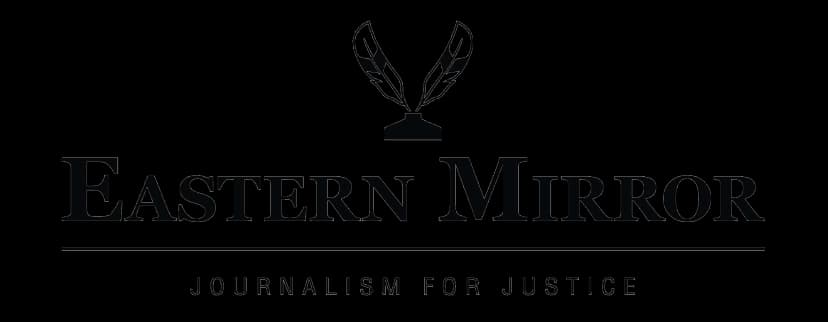MONDAY, AUGUST 11, 2025
- Home
- Identity of the Nagas: Exploring Origins, Narratives, and the Fluidity of Identity
Identity of the Nagas: Exploring Origins, Narratives, and the Fluidity of Identity
This paper seeks to synthesise the diverse accounts of Naga origins, examine the philosophical foundations of identity, and propose a pathway toward a more cohesive and inclusive Naga identity.
Published on Aug 10, 2025
By EMN
Share
Introduction
The Nagas—an indigenous people primarily inhabiting Northeast India, parts of Myanmar, and adjoining regions—possess a rich yet complex cultural heritage. In the absence of a unified written history, their origins and identity remain woven from oral traditions, myths, folktales, and legends. These narratives, vibrant yet often ambiguous or contradictory, reflect the multifaceted nature of Naga identity.
This paper seeks to synthesise the diverse accounts of Naga origins, examine the philosophical foundations of identity, and propose a pathway toward a more cohesive and inclusive Naga identity—one that honours both diversity and shared heritage. It also addresses broader questions about the nature, significance, and implications of identity in human society.
Mythical and Historical Origins
Without a single definitive historical record, the Nagas rely on oral traditions as the primary lens through which their past is understood. These stories—interwoven with myth, legend, and folklore—offer insight into their worldview.
One prominent myth recounts the tale of three brothers—symbolising the tiger, the spirit, and the human—born from a mystical woman, Dziiliimosiiro, through a miraculous encounter with a cluster of clouds. Another legend speaks of the Sky God’s union with Mother Earth, from whom all life, including the Nagas, emerged. The progenitor figure—often called Emonokapipfii or Ukepenupfii—symbolises the sacred bond between the Nagas and nature.
Yet, these mythical origins vary widely among tribes. The Tenyimie and allied tribes trace their ancestry to Makhel and Khezakheno, while the Aos, some Phoms, Konyaks, Changs, and Sangtams claim origins in Lunthurok/Lungtrok. Other groups identify ancestral roots in Myanmar. Such diversity reflects distinct migration routes, cultural contexts, and historical experiences.
Before the term “Naga” became a unifying label, tribal and village identities dominated. Even in the 19th century, there was little collective self-recognition as a single people. Linguistic diversity reinforced this fragmentation, although some shared root words hint at a common heritage. Cultural elements—such as head-hunting, traditional attire, and food habits—were broadly similar but retained tribal distinctiveness. Interestingly, the recognition of commonalities often came from outsiders, who grouped these diverse tribes under the collective label “Naga.”
The Evolution of Naga Identity
The emergence of a unified Naga identity is largely a political development, rooted in the struggle for sovereignty and self-determination. Leaders like A.Z. Phizo articulated a vision of a single Naga people, transcending tribal boundaries. While this vision fostered solidarity, it also gave rise to paradoxes: unity on one hand, and factionalism—over 30 splinter groups—on the other.
Language remains a significant challenge. The Nagas lack a common native tongue; instead, Nagamese—a creolised form of Assamese—functions as a link language. This, however, has been critiqued as a form of cultural domination by Assamese, counter to the Naga political movement. Tenyidie, the language of the Tenyimie (the largest and most influential Naga group, with a central and fertile homeland), is considered a strong candidate for a common Naga language.
Philosophical Reflections on Identity
Understanding Naga identity requires addressing fundamental philosophical questions: Is identity fixed or fluid? Is it inclusive or exclusive? What truly constitutes Naga identity—shared origin, language, culture, or political aspiration?
Identity, at its essence, is a marker that defines an individual or group in relation to others. It is both visible (traditions, attire, language) and invisible (shared struggles, aspirations). Crucially, identity is fluid, shaped by historical, social, and political contexts. For the Nagas, it has evolved from village-based affiliations to a broader ethnic and political construct.
While identity provides belonging and mobilises collective action, rigidity can breed exclusion and conflict. The factional divisions among Nagas echo similar identity-based conflicts worldwide. Wittgenstein’s “family resemblance” concept offers a useful lens here: Naga tribes share enough overlapping traits—linguistic, cultural, historical—to bind them together without requiring uniformity.
Moral and Practical Dimensions
Identities are both necessary and potentially harmful. They give meaning and structure but can also entrench prejudice and division. Among the Nagas, inter-tribal biases—often rooted in ignorance—highlight the dangers of rigid boundaries.
The way forward lies in cultivating identities that are fluid and inclusive, enabling coexistence and mutual respect. For the Nagas, this means embracing a broader identity that transcends tribalism while valuing cultural uniqueness.
Toward a Cohesive Naga Identity
A stronger Naga identity requires informed dialogue, quality education, and historical clarity. Misinterpretations by colonial and European authors such George Abraham Grierson and Varrier Elwin as the mistranslation of Kecheemie referring to Zeliang Nagas (forest dwellers) as “Kacha Nagas,” or Christopher von Fürer-Haimendorf’s title The Naked Nagas referring to the Konyak Nagas as all Nagas—have fuelled misconceptions. Correcting such distortions is essential.
Building unity does not mean erasing tribal distinctions. Instead, it means creating an “identity ecosystem” where local, tribal, ethnic, human, and cosmic identities coexist harmoniously. This broader framework aligns with the concept of universal order—Rta or Dharma in Sanskrit, Tao in Chinese, and Oramei Bathe/Bashi in Mao language—upheld by sages and philosophers across cultures.
Conclusion
The Naga identity is an evolving mosaic—rich in myth, diverse in heritage, and shaped by political struggle. Moving from a loosely shared label to a deeply felt collective bond requires dismantling misunderstandings, fostering inclusivity, and recognising the fluid nature of identity.
The task before Naga leaders and communities is to strengthen the unifying threads without erasing the intricate patterns of tribal identities—while also connecting to the broader human and cosmic order. In doing so, the Nagas can envision a future where identity is not a boundary, but a bridge—rooted in heritage, open to the world, and attuned to the universal rhythm of life. Any identity should have the moral and spiritual values as part of the important component.
Dr. Xavier P. Mao
Professor, Department of Philosophy, NEHU

